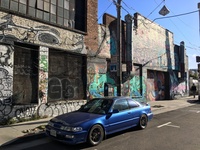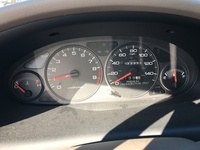 |
| Angelika/Mike Schilli |
|
Michael As a German expatriate, I often find myself in the absurd situation of having to explain to Americans that I do not see German vehicles as the be-all and end-all of the international automotive industry. When a sports car enthusiast colleague buys a BMW or Porsche, I can't help but think to myself: You fool! Why do you spend so much money on unnecessarily complicated frills that are also so hopelessly unreliable that the car spends more time in the workshop than thundering down the highway? I also hear horror stories from colleagues about overburdened Californian mechanics having to call Sindelfingen or Munich because completely trivial things break down, which then can only be fixed with special tools ordered straight from Mars, and which broke in the first place because they were developed by completely incompetent German engineers who seem to have lost the skill of designing reliable components.
I would also never buy a Tesla, simply because I need a car for driving, not a toy, I need a car that still runs even when there's no electricity available. But it's entertaining to watch how Tesla is giving German car manufacturers a run for their money because they aren't afraid to question everything that has existed so far and do things radically different, so much so that Tesla drivers rub their eyes in amazement and wonder why no one thought of this before.
Besides, what continues to deter me from buying new cars is the fact that car salespeople nowadays hardly make any profit from selling a vehicle. Instead, they speculate that the customer will constantly bring the car in for some costly "inspections," during which the dealer then "preventively" replaces perfectly functioning parts. Completely insane! These maintenance tasks, which the onboard computer demands every ten thousand miles, are utter nonsense and a money-making scheme. I know from car-loving colleagues that car dealers now charge extra if the buyer does not live in the nearby area. After all, they don't make any money from pointless inspections if the buyer is likely to have them done in their hometown.
For those who are interested: The maintenance cycle for our two cars looks like this: Oil is changed approximately every 5,000 miles, at the cheapest oil change provider for about 60 dollars. Otherwise, nothing is done unless something starts to rattle, squeak, or leak. Then I either fix it myself by purchasing the necessary replacement part from Amazon or an auto parts supplier, or, if the repair is beyond my knowledge, I take it to a Chinese mechanic in the Outer Mission neighborhood, whom I know to be reliable and honest. For a few hundred dollars, the man goes above and beyond.
With our aging 1998 Acura Integra, which at 21 years old will probably soon end up in the car graveyard, similar to its predecessor, a 1991 Integra, I find that interested buyers are mainly in the "Fast and Furious" bracket. Anyone who takes a look at the tachometer in figure 2 might notice that the red zone doesn't start until 8000 RPM. That's all I'm going to say about this. On YouTube, you can watch Brazilian race car driver Ayrton Senna, who tragically died in 1994, drive an Acura NSX between seven and eight thousand RPMs around a racetrack, wearing moccasins and white socks.
In San Francisco, these young car enthusiasts are called "Rice Boys," mostly Asian youths who race souped-up Hondas or Toyotas in so-called "sideshows" on deserted supermarket parking lots at night. Just like in the first part of the movie The Fast and the Furious in which, in the first street racing scene, a certain "Edwin" drives an Integra.
Unsurprisingly, these models are stolen like hotcakes, and for this reason, I recently personally installed a so-called "kill switch." This is a switch in a top-secret location that must be flipped for the fuel pump to start. Otherwise, the engine cranks endlessly and won't start even with a hot-wired ignition, causing thieves to get nervous, pull their hair out, and look for other targets.












